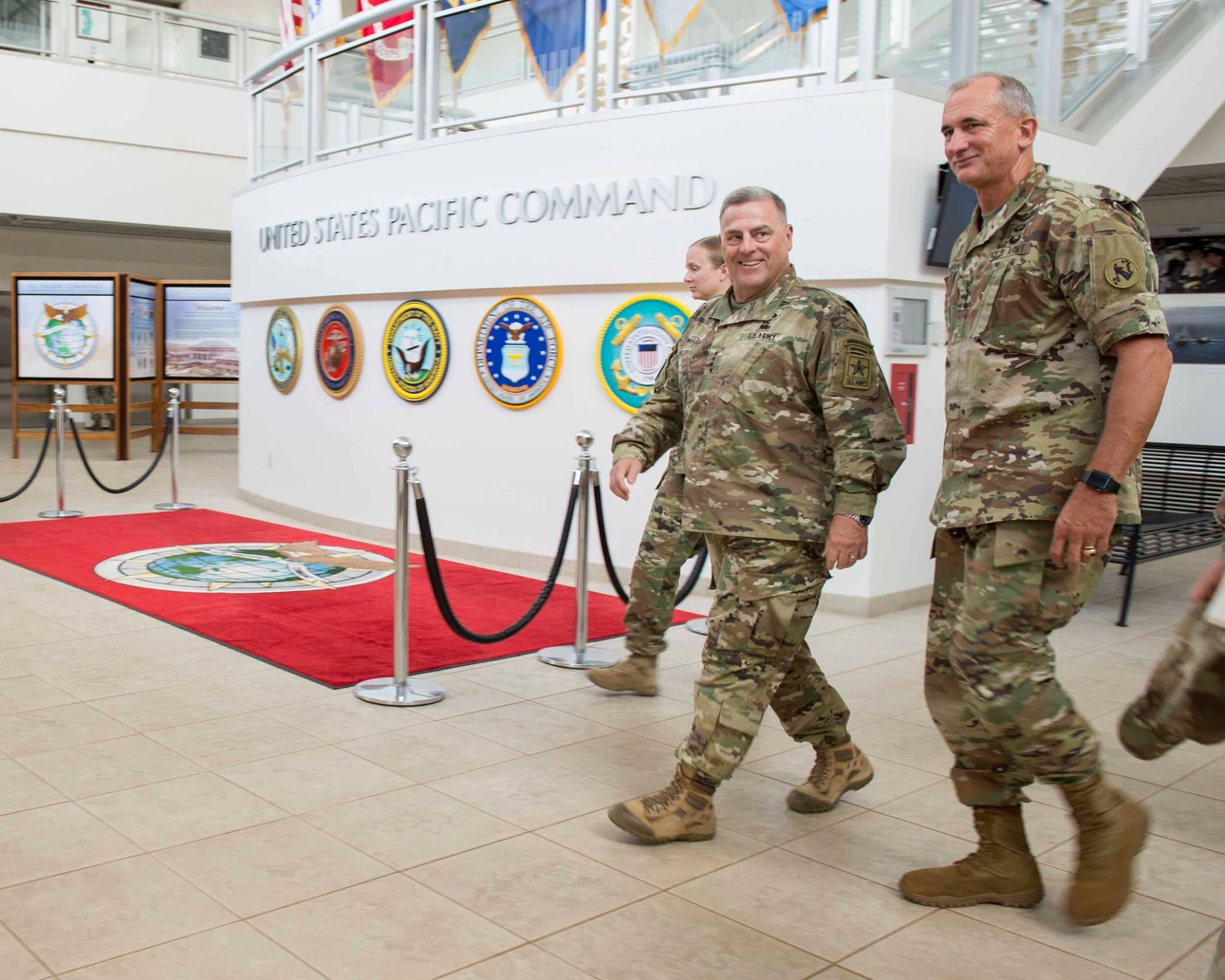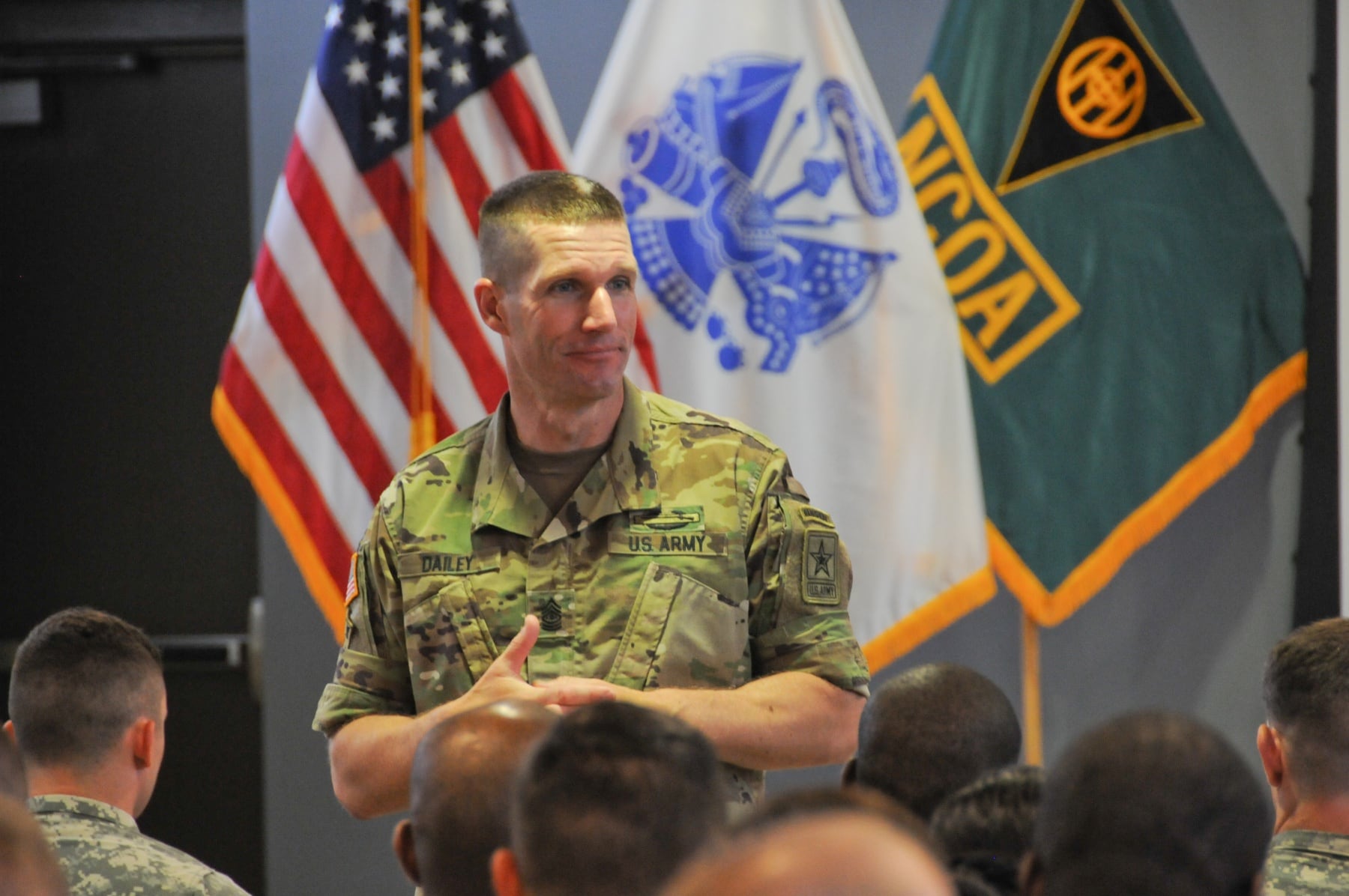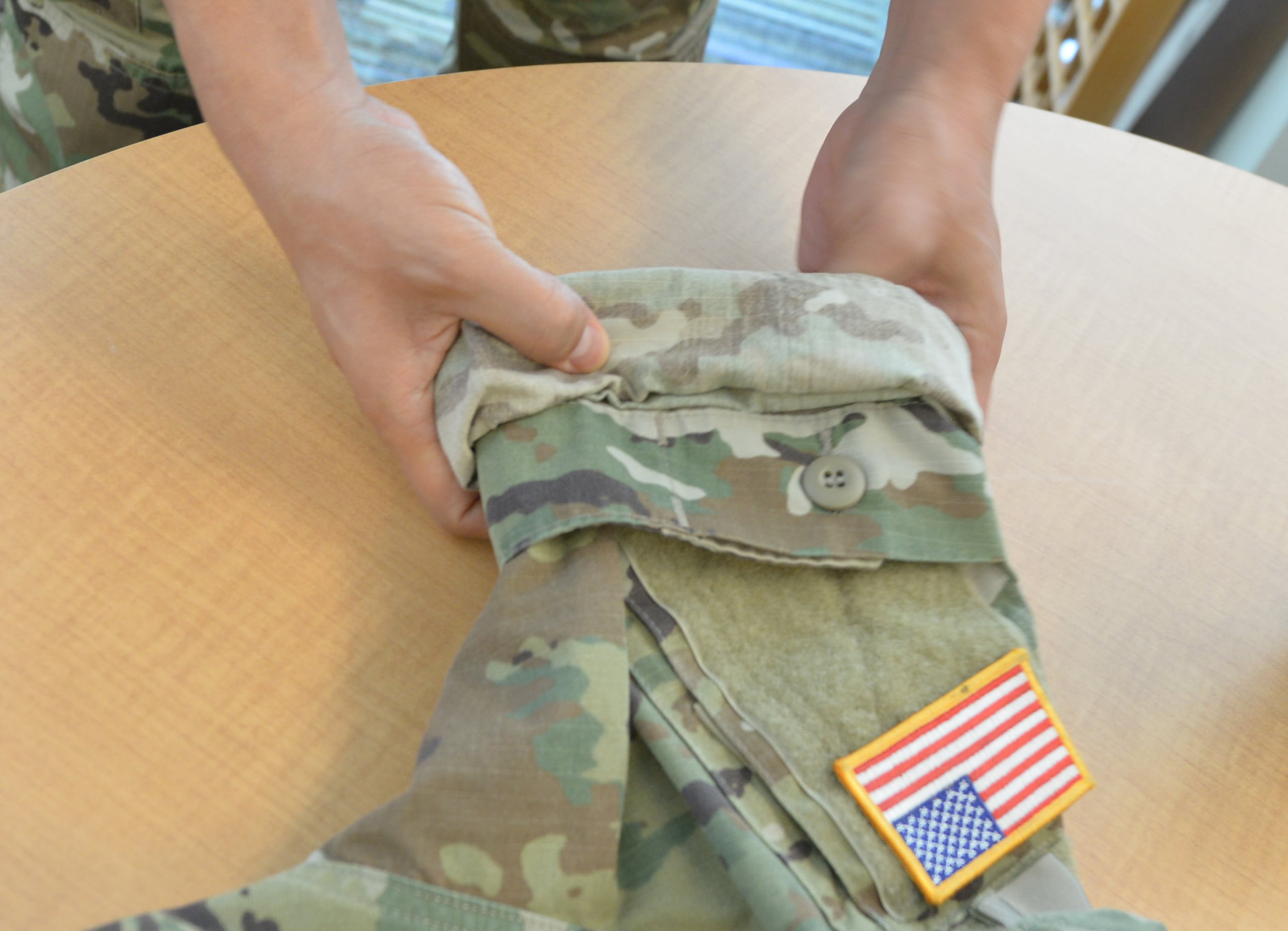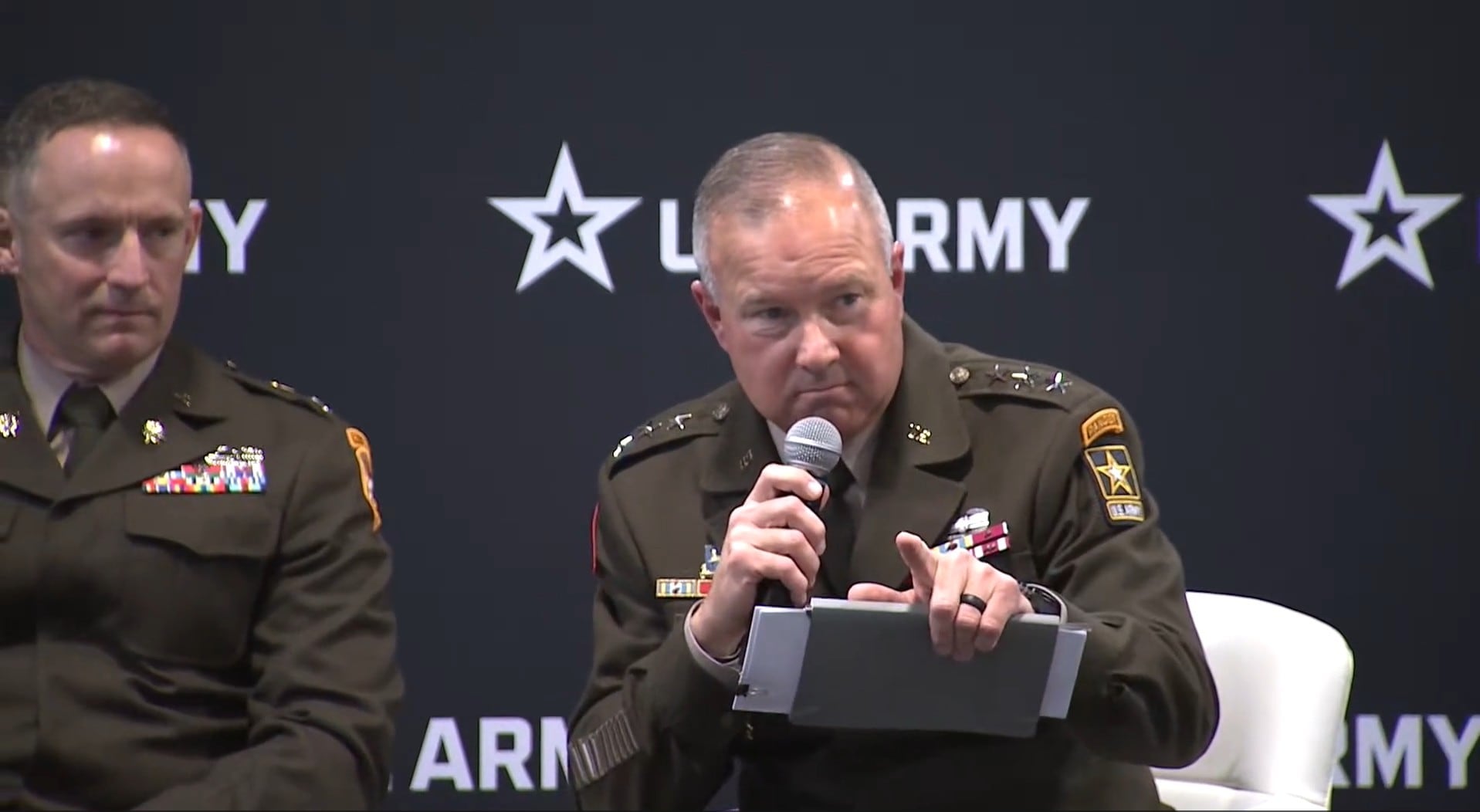From four-star generals to the youngest privates, soldiers across the Army have embraced the service's decision in June to allow rolled sleeves – especially during the height of summer.
But excitement over the ability to roll the sleeves of the Army Combat Uniform has not been universal.
The almost 10,000 National Guard soldiers in Illinois are not allowed to roll their sleeves, according to a memo from Brig. Gen. Michael Zerbonia, the assistant adjutant general and commander of the Illinois Army National Guard.
"This authority is not delegated below my level," the memo states. "This decision will be reevaluated in the next 90 days and updated guidance will be published if necessary."
Lt. Col. Brad Leighton, a spokesman for the Illinois Guard, defended the general's decision.
"This is a decision by our general," he said. "Essentially, we have a lot of other things we're doing right now, and to implement guidance from the Army, we want to take a look at it. We're going to take the 90 days and reevaluate."
He added that the Illinois Guard is "not the only command that’s decided not to go with the short sleeves right away."
The decision to allow rolled sleeves "came out suddenly" from Army leaders, "and if we’re going to implement it, we’re going to implement it in a thoughtful manner," Leighton said.
He added that "not every decision a commander makes is going to be a popular one."
Also going sleeves down are the soldiers working at the Army National Guard Readiness Center in Arlington, Virginia.
"The uniform policy is currently under revision," said Lt. Col. Wes Parmer, a spokesman for the Army Guard. "For now, soldiers have been directed to keep their sleeves down and await further guidance."

Gen. Robert Brown, right, commander of U.S. Army Pacific has his sleeves rolled as he gives Army Chief of Staff Gen. Mark Milley a tour of USARPAC headquarters. Milley approved sleeve-rolling across the force this summer.
Photo Credit: Army
In contrast, sleeve-rolling is mandatory for soldiers in the 1st Infantry Division from April 15 through Oct. 15, according to a video of the division’s command team posted on Facebook.
On Fort Hood, Texas, where this all began – a soldier asked Army Chief of Staff Gen. Mark Milley for permission to roll sleeves when the general presided over a reenlistment ceremony there – soldiers in the 1st Cavalry Division can roll their sleeves at their commander’s discretion, said Maj. John Miller, a spokesman for the division.
The 1st Cavalry Division command team, Maj. Gen. J.T. Thomson and Command Sgt. Maj. Maurice Jackson, only stipulate that a formation has to be the same – with all sleeves either up or down – based on that subordinate commander’s decision, Miller said.
The same goes for an end date. Division leaders will not stipulate the uniform requirements of a subordinate command as long as formations are in the same uniform, Miller said.
In the 82nd Airborne Division at Fort Bragg, North Carolina, sleeve-rolling is allowed but not mandatory, said Master Sgt. Pat Malone, a spokesman for the division.
"Commanders have the flexibility to establish uniform guidance in accordance with their mission requirements," Malone said.
For example, he said, commanders can call for sleeves down for events such as change of command ceremonies. Sleeves also can only be rolled in garrison; sleeves will be down and cuffed during field training exercises and airborne operations.

Even Sergeant Major of the Army Dan Dailey is getting into rolling his sleeves. In July, Dailey had his sleeves rolled during a meeting with Army and Air Force students attending the Basic Leader Course at Joint Base McGuire-Dix-Lakehurst, New Jersey.
Photo Credit: Staff Sgt. Shawn Morris/Army
For paratroopers in the 82nd Airborne, they likely will be allowed to roll their sleeves from April through October, based on "the temperate climate we are in," Malone said, adding that that timeframe "is not written in stone" and is, again, up to commanders.
The rules are similar for soldiers in the 101st Airborne Division at Fort Campbell, Kentucky.
"Commanders may authorize rolled sleeves in garrison in the 101st, but it is not mandatory," said Master Sgt. Kevin Doheny, a spokesman for the division.
The same goes for the 3rd Infantry Divisionat Fort Stewart, Georgia, where soldiers are allowed to roll their sleeves as long as their first sergeant approves.
Milley on June 16 announced a 10-day sleeve-rolling trial at Fort Hood after a soldier asked during a re-enlistment ceremony for permission to roll his sleeves.
The issue of rolled sleeves – the Marine Corps allows sleeve-rolling in the summer, as do the Air Force and Navy – has been a hot topic among soldiers for years. In February, when Army Times asked readers what they wanted Dailey to tackle during his second year on the job, several wrote in asking for permission to roll their sleeves in the summer.
Soldiers have not been allowed to roll up their sleeves since the Army Combat Uniform replaced the Battle Dress Uniform in 2005. The Army’s official explanation was that the top was made to protect soldiers’ forearms from the sun, insects and other elements, and it’s not designed to be cuffed.
Sleeve-rolling is at the commander’s discretion, said Sergeant Major of the Army Dan Dailey. And there are no time or seasonal limits as long as it’s approved by your commander, he said, citing for example soldiers stationed in Hawaii, where the weather is warm pretty much all year.
Soldiers also will be allowed cuff their sleeves, with the camo facing out, in a field environment, Dailey said.
"You can cuff your sleeves in temperate environments at the discretion of the commander and if there are no safety issues," Dailey said.
As a reminder, according to the Army memo:
- Commanders may authorized rolled sleeves effective immediately.
- The memo applies to the Army Combat Uniform in the Universal Camouflage Pattern, Operational Camouflage Pattern or Operation Enduring Freedom Camouflage Pattern.
- Sleeves will be rolled with the camo facing out.
- Sleeves will be rolled neatly above the elbow but no more than 3 inches above the elbow.
- Sleeves may be down and cuffed upon commander approval and only during field training exercises.
Michelle Tan is the editor of Army Times and Air Force Times. She has covered the military for Military Times since 2005, and has embedded with U.S. troops in Iraq, Afghanistan, Kuwait, Haiti, Gabon and the Horn of Africa.





